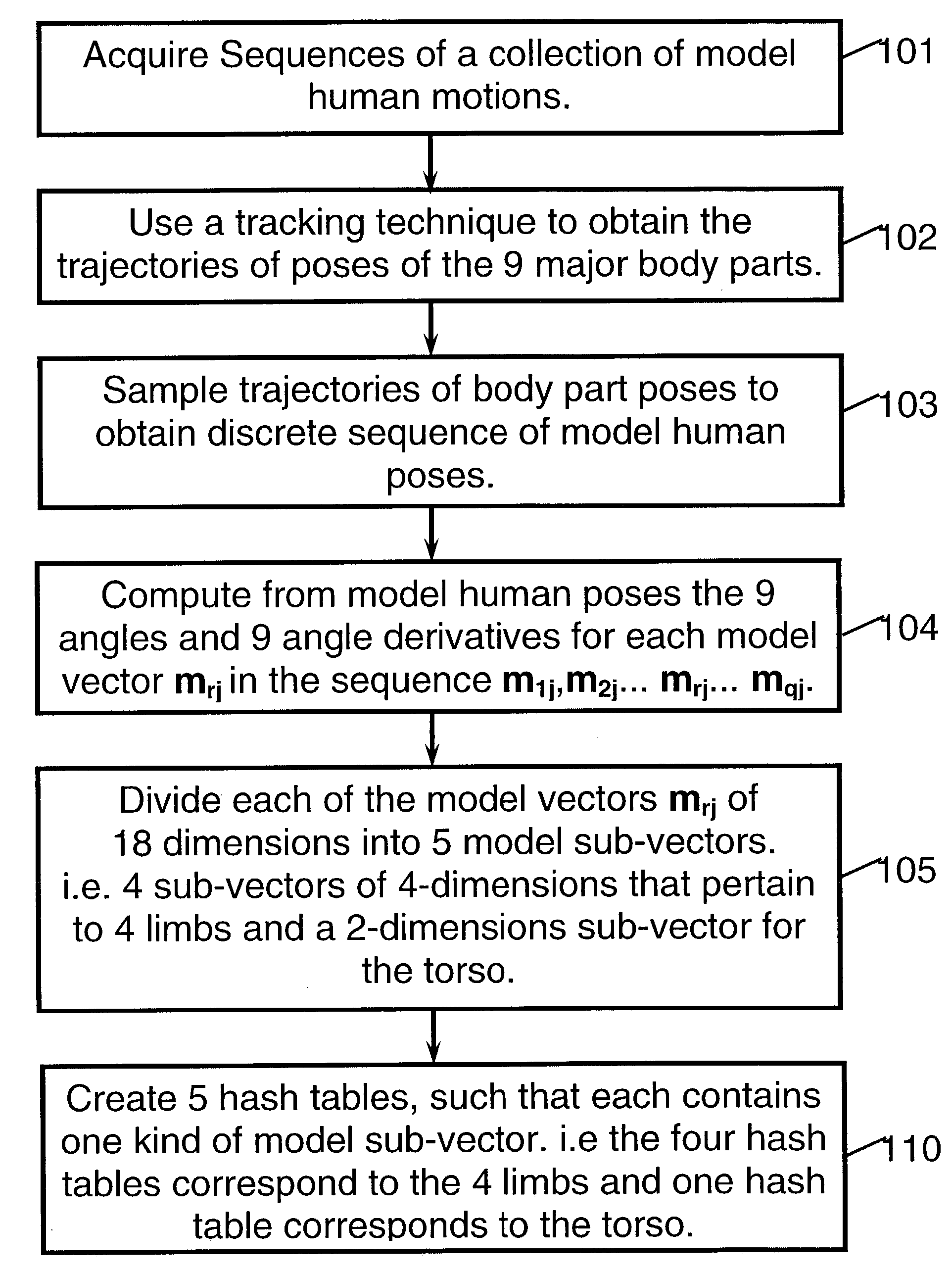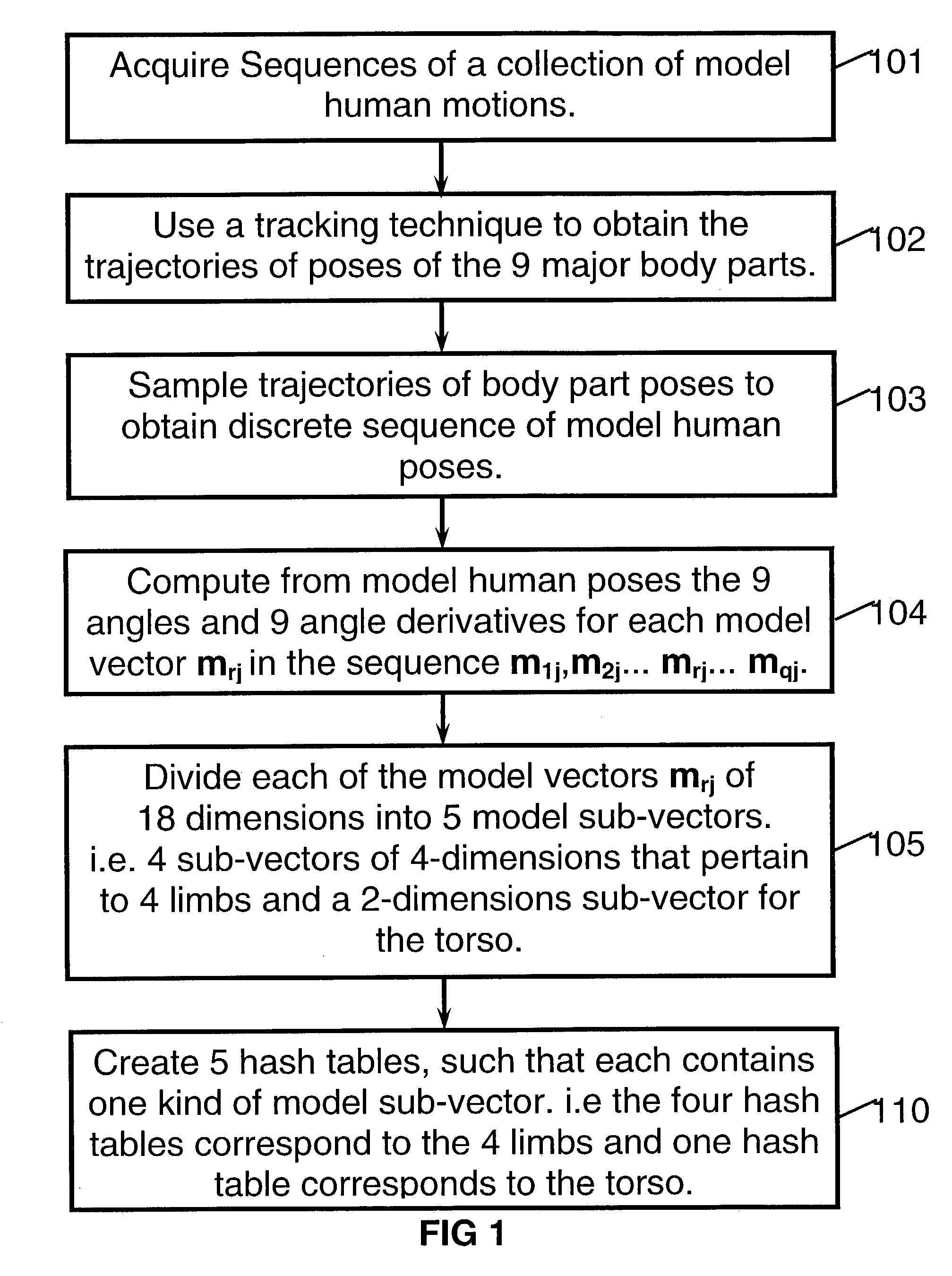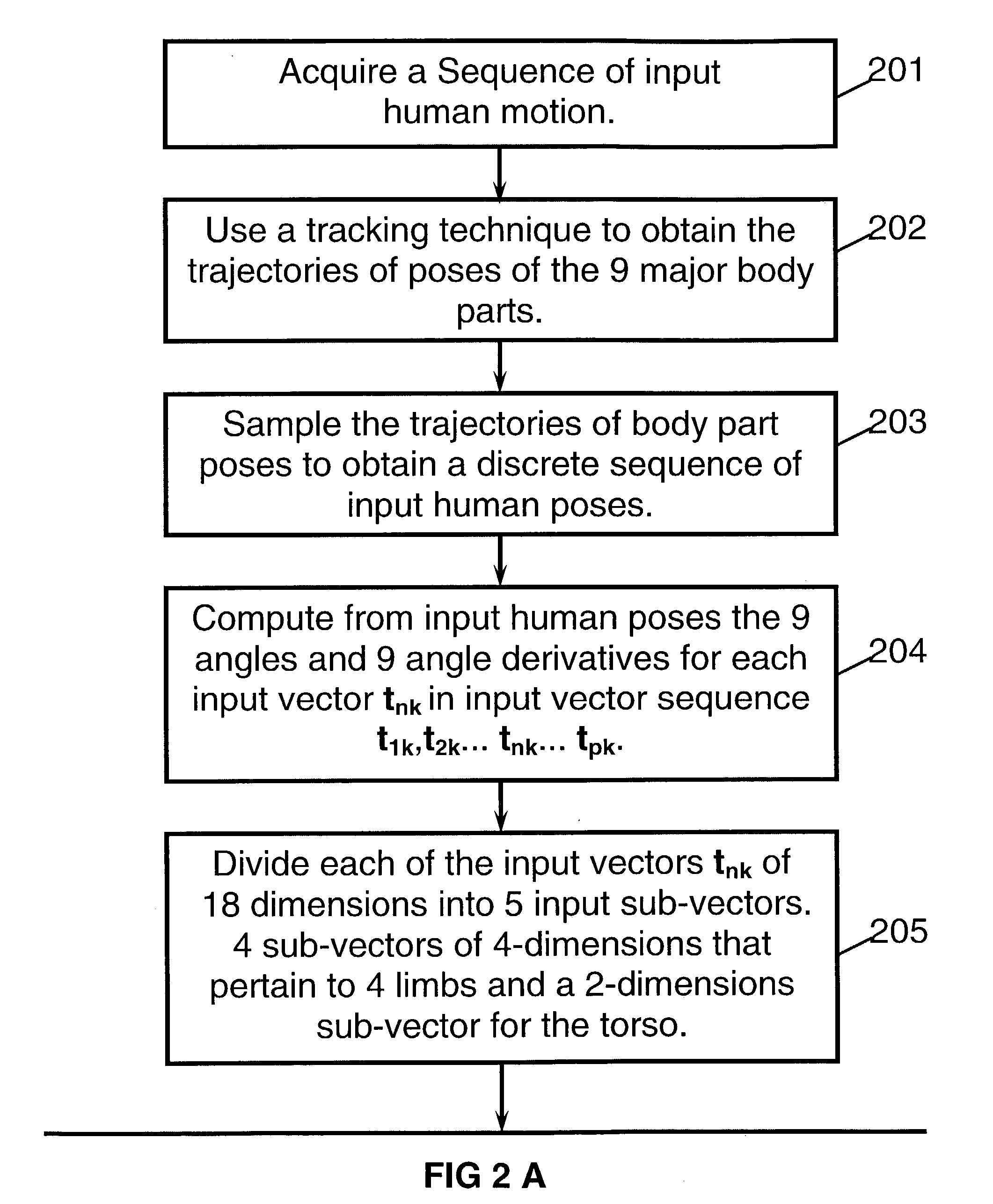Method of recognition of human motion, vector sequences and speech
a vector sequence and human motion technology, applied in the field can solve the problems of large variation of speed, poor robustness of human motion recognition, and inability to provide satisfactory solutions in the early stages of the art, and achieve the effect of ensuring the accuracy of the recognition
- Summary
- Abstract
- Description
- Claims
- Application Information
AI Technical Summary
Benefits of technology
Problems solved by technology
Method used
Image
Examples
Embodiment Construction
of the Method of Speech Recognition
[0071] Speech Recognition (SR) has been an active research objective for many years. At first, research concentrated on recognition of separate words in a limited vocabulary. More recently, research is focused on large vocabularies and continuous speech as well. Systems for speech recognition are already commercially available. However, even now those systems have high error rates and are limited to vocabularies of few thousand words in limited domains such as airline reservations.
[0072] Currently, modern speech recognition systems rely on models that require hundreds of thousands parameters that are obtained by intensive statistical analysis of hundreds of hours of recorded speech. In contrast, in our proposed method of speech recognition, we aim at reducing significantly the required number of parameters that describe speech models. Our method is elaborated in this section. But, first we have to describe the prevalent SR methods and the basic con...
PUM
 Login to View More
Login to View More Abstract
Description
Claims
Application Information
 Login to View More
Login to View More - R&D
- Intellectual Property
- Life Sciences
- Materials
- Tech Scout
- Unparalleled Data Quality
- Higher Quality Content
- 60% Fewer Hallucinations
Browse by: Latest US Patents, China's latest patents, Technical Efficacy Thesaurus, Application Domain, Technology Topic, Popular Technical Reports.
© 2025 PatSnap. All rights reserved.Legal|Privacy policy|Modern Slavery Act Transparency Statement|Sitemap|About US| Contact US: help@patsnap.com



